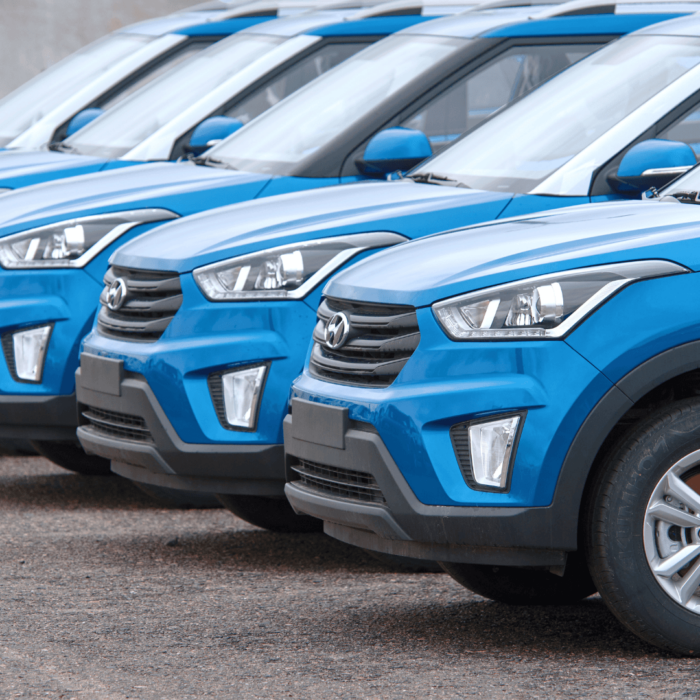Team Cardata
5 mins
Distracted Driving in Commercial Fleets
Distracted driving is a major problem when it comes to driver safety. Discover interventions that can help reduce distraction.

Did you know that motor vehicle crashes remain the single largest cause of work-related deaths in the United States? This article explores why distracted driving is accelerating inside commercial fleets, details its human and financial toll, and demonstrates how technologies such as automated mileage capture, telematics, and uncompromising phone policies eradicate the problem while delivering a rapid return on investment.
Introduction
Every time a sales representative reaches for a phone, their safety is put at risk. Crashes, most importantly, can injure and harm employees. Beyond that, they rupture delivery schedules, inflate insurance premiums, and erode customer trust. Because most business trips occur in personally owned or lightly monitored vehicles, traditional safety mandates seldom reach the road, leaving companies exposed to liability they think they have outsourced.
The Safety Concerns of Driver Distraction
Speeding is dangerous, and distraction is another critical threat to driver safety within fleets. There are many factors contributing to distracted driving, including manual phone data entry—such as keying odometer readings—that forces eyes off the road. Second, calls, texts, and push notifications tempt employees who believe responsiveness equals good customer service. Third, modern infotainment systems demand the same visual attention as smartphones when drivers pinch-to-zoom or type an address.
Additionally, cognitive overload from tight delivery windows or real-time routing changes can distract even hands-free drivers. Finally, fatigue stretches reaction times, amplifying the danger of any secondary task. Regulators have noticed: the FMCSA bans handheld device use under 49 CFR §392.82. Many states also prohibit it for all motorists, yet enforcement gaps and permissive corporate cultures still leave plenty of room for catastrophe.
The Price of Looking Away
A fatal crash occurs every fifteen seconds on U.S. roads, and the majority involve someone driving for work. For companies, each death is a tragic incident, as well as carrying direct costs of roughly seventy thousand dollars. Even non-fatal collisions drain profits through soaring commercial auto premiums—already up to twice personal rates—lengthy vehicle downtime, missed appointments that push customers to competitors, and sustainability setbacks when emergency rentals replace damaged vehicles. Employers are also liable when staff crash their own cars on company business, meaning the belief that “it’s their vehicle, their problem” is legally false.
Potential Solutions to Consider
Four interventions can help shrink collision rates. Defensive driving courses that culminate in comprehension exams conduce to fewer crashes and can earn premium discounts from insurers. Telematics platforms and dashcams provide real-time alerts for phone handling, harsh braking, or lane departure.
Additionally, written zero-tolerance mobile device policies backed by incentives—gift cards, public recognition, or lower reimbursement deductibles—can help convert rules into behavior. Finally, IRS-compliant mileage tracking platforms can automate trip capture and payment, wiping out the need for manual logs and the distraction that accompanies them. Preventive maintenance rounds out the strategy by averting on-route breakdowns that trigger stress and risky improvisation.
Making the Financial Case
Senior leaders sometimes balk at the upfront price of telematics hardware or training courses, yet the arithmetic is unequivocal: a single severe crash is integral to avoid. Beyond potentially creating conditions for safer driving, these interventions are invaluable for reducing costly collisions.
Transitioning from company-owned vehicles to a fixed-and-variable-rate (FAVR) reimbursement model can cut total program costs up to thirty percent and shifts primary insurance liability to employees’ personal policies, further insulating the balance sheet.
What to Do Next
Begin with a candid audit of current distraction triggers: phone use, schedule pressure, and fatigue. Replace manual mileage logs with automated mileage capture to erase a major temptation overnight, then layer telematics and dashcams for real-time coaching. Anchor the program with a zero-tolerance phone policy, reinforce it through defensive driving training, and consider moving to FAVR reimbursement to unlock further savings and liability protection. Each step compounds the effect of the last, converting incremental safety gains into a strategic moat.
Conclusion and Call to Action
Distracted driving is neither inevitable nor merely a compliance issue; it is a solvable business risk that silently erodes profit until leadership intervenes. Cardata’s automated mileage tracking app and reimbursement platform help to remove one of the most common sources of in-vehicle distraction while providing the analytics needed to justify broader safety investments. To see how easily your organization can cut collisions, costs, and carbon in one stroke, request a personalized demo today.
Disclaimer: Nothing in this blog post is legal, accounting, or insurance advice. Consult your lawyer, accountant, or insurance agent, and do not rely on the information contained herein for any business or personal financial or legal decision-making. While we strive to be as reliable as possible, we are neither lawyers nor accountants nor agents. For several citations of IRS publications on which we base our blog content ideas, please always consult this article: https://www.cardata.co/blog/irs-rules-for-mileage-reimbursements. For Cardata’s terms of service, go here: https://www.cardata.co/terms.
Share on:

